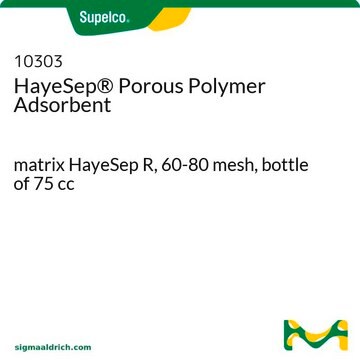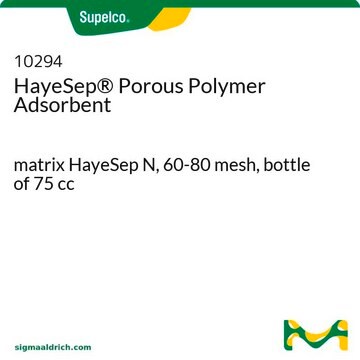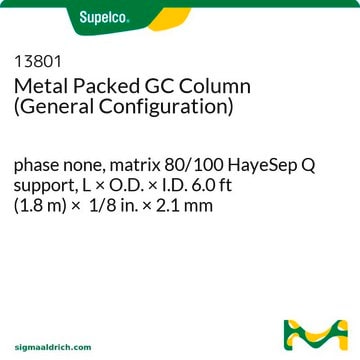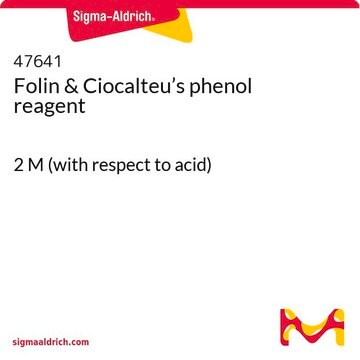10306
HayeSep® Porous Polymer Adsorbent
matrix HayeSep S, 60-80 mesh, bottle of 75 cc
About This Item
Produits recommandés
Forme
solid
Conditionnement
bottle of 75 cc
Fabricant/nom de marque
Hayes Separation Inc
Paramètres
250 °C temp. limit
Technique(s)
gas chromatography (GC): suitable
Superficie
~583 m2/g
Matrice
HayeSep S
Taille des particules
60-80 mesh
Densité
~0.33 g/mL (free fall density)
Vous recherchez des produits similaires ? Visite Guide de comparaison des produits
Description générale
For more information about any of our adsorbents, please visit sigma-aldrich.com/adsorbents
Application
Informations légales
Code de la classe de stockage
11 - Combustible Solids
Classe de danger pour l'eau (WGK)
WGK 3
Point d'éclair (°F)
Not applicable
Point d'éclair (°C)
Not applicable
Équipement de protection individuelle
Eyeshields, Gloves, type N95 (US)
Choose from one of the most recent versions:
Certificats d'analyse (COA)
Sorry, we don't have COAs for this product available online at this time.
If you need assistance, please contact Service Clients
Déjà en possession de ce produit ?
Retrouvez la documentation relative aux produits que vous avez récemment achetés dans la Bibliothèque de documents.
Notre équipe de scientifiques dispose d'une expérience dans tous les secteurs de la recherche, notamment en sciences de la vie, science des matériaux, synthèse chimique, chromatographie, analyse et dans de nombreux autres domaines..
Contacter notre Service technique







